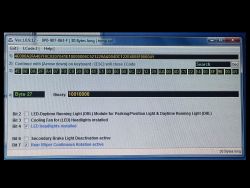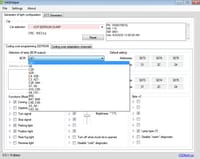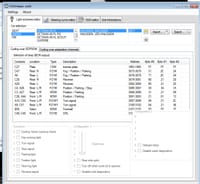I changed low beam lights for LEDs on octavia mk2 (also sometimes called 1Z or A5) (no led h7 bulbs, but LED projector retrofit).
Car is based on PQ35 platform.
Issue is that there is cold bulb check when key is moved to ignition is on or accessory position. Most times this results in error about one or both headlights having light bulb not working.
So far I have tried:
looking in VCDS and there is no way to disable cold bulb check for low beam
VCP - this has option to program BCM eeprom, options for every bulb to disable cold bulb check EXCEPT low and high beams
Vaghelper - this is basically what VCP copied
I have added capacitor into one headlight and it seems to eliminate the error. but every time I turn on the car headlight does flash as it does the cold bulb check, which is kinda embarrassing. It does so even without the capacitor, but very dimly.
from the ELSA it seems that BCM pins they cold bulb check need to be disabled are A11 and C52.
Is there a known way to program BCM to not do cold bulb check for low beam?
Is there known hardware workaround that would get rid of the error and not cause headlights flashing?
Car is based on PQ35 platform.
Issue is that there is cold bulb check when key is moved to ignition is on or accessory position. Most times this results in error about one or both headlights having light bulb not working.
So far I have tried:
looking in VCDS and there is no way to disable cold bulb check for low beam
VCP - this has option to program BCM eeprom, options for every bulb to disable cold bulb check EXCEPT low and high beams
Vaghelper - this is basically what VCP copied
I have added capacitor into one headlight and it seems to eliminate the error. but every time I turn on the car headlight does flash as it does the cold bulb check, which is kinda embarrassing. It does so even without the capacitor, but very dimly.
from the ELSA it seems that BCM pins they cold bulb check need to be disabled are A11 and C52.
Is there a known way to program BCM to not do cold bulb check for low beam?
Is there known hardware workaround that would get rid of the error and not cause headlights flashing?









